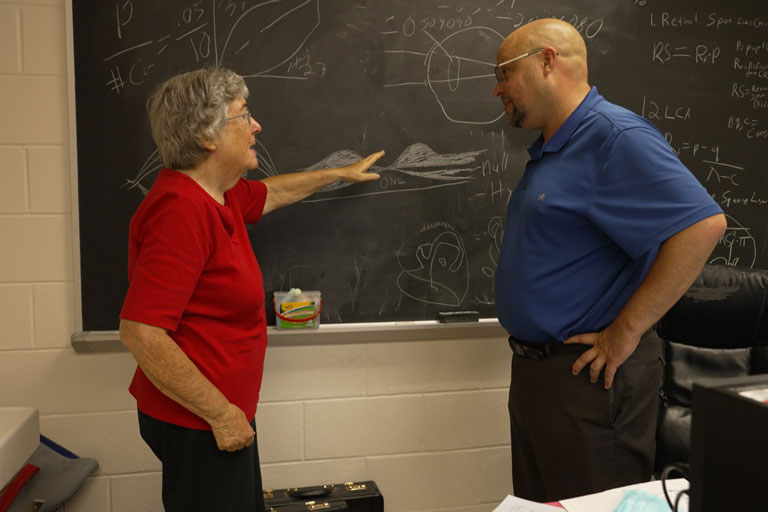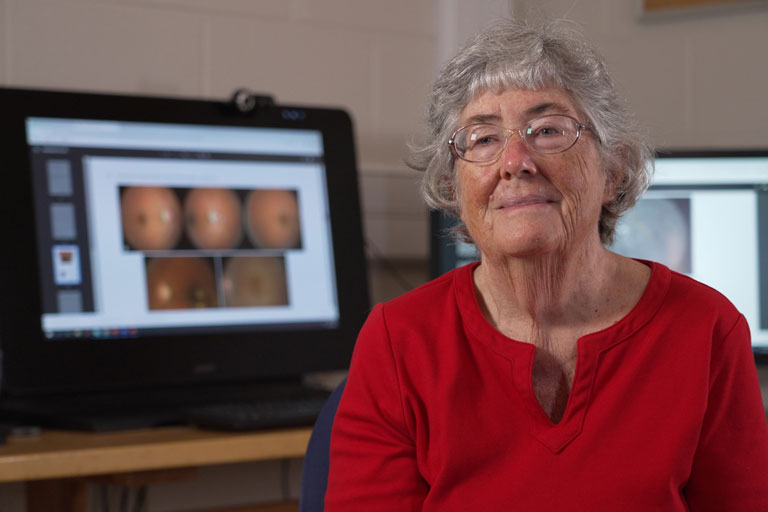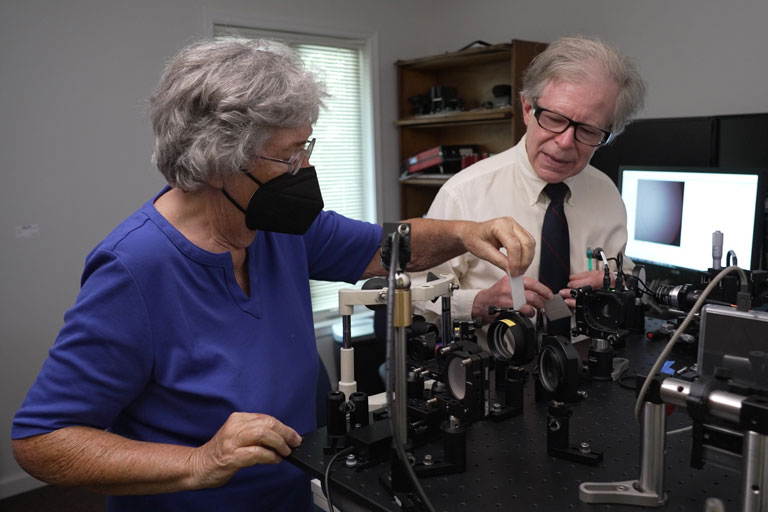As a student at Indiana University Bloomington, Ann E. Elsner developed a fascination with color vision and a passion to study how people see color. This turned into a decades-long career with a focus on advancing retinal imaging technology for the early detection of eye diseases.
"I want to see vision saved," said Elsner, a Distinguished Professor in the IU School of Optometry. "I'm so excited to be in this field where hope for good vision is given to more and more patients each day. I have many colleagues also working towards a future where more people can keep their vision into the later years of their lives."
Elsner's work was recently recognized when she was named a 2022 recipient of the Charles F. Prentice Medal Award from the American Academy of Optometry. The annual award is presented to a distinguished scientist or clinician scientist to recognize their record of advancing the knowledge of vision science over the course of their career.
An estimated 12 million Americans over 40 years old have some type of vision impairment, according to the Centers for Disease Control and Prevention. Elsner's research advances retinal imaging technology in both the medical and scientific fields, a field she transformed after her discovery of how infrared light provides a clinically effective image of the retina.
At the beginning of her career, retinal imaging could provide an acceptable photo of young, healthy eyes, but was failing to detect diseases in older patients due to low quality images. Early detection of vision impairing diseases is dependent on imaging technology to catch beginning stages of degeneration. The most common eye diseases that cause vision impairment are age-related macular degeneration, glaucoma, diabetic retinopathy, cataract and refractive error, which affect more Americans each year due to the spread of diabetes and chronic diseases.
The concentrations of her research on retinal pathologies are age-related central vision loss, the effects of diabetes on the eye and the normal aging of the eye. In the optometry and ophthalmology communities, Elsner is known for her expertise on how different light sources can improve imaging.
"My first experience outside of graduate school was in a clinical department -- the Department of Ophthalmology at the University of Chicago -- and I really became fascinated with retinal disease and how that ruined people's chances of having clear vision," Elsner said. "You want to diagnose this early because you can give the best help to people, in many diseases, if you know early."
Currently, Elsner's projects are better defining the difference between normal signs of eye aging in the eye and early signs of disease. Specific projects include seeking to understand the role of disease in survival of photoreceptors over decades of life and implementing an affordable camera to screen the effects of diabetes on the eye while minimizing camera-training time. The National Eye Institute reports an estimated an annual $139 billion spent nationwide on vision loss, eye diseases and vision disorders.
"It's a constant battle to know you can do something to help diagnosis but realize it’s too expensive and it would just never go," Elsner said. "It's not that we can't figure out how to do it; we're just trying to figure out how to do it in a cheaper, simpler manner to include all patients."
Elsner's research and work is applicable to real world solution, leading to patents. The inventions of IU faculty are submitted to the IU Innovation and Commercialization Office. The next steps are varied, including helping with grant submissions to fund the research and seeking investment and collaborations. The goal is to take IU innovations to market by collaborating with faculty, industry members and the entrepreneurial community in Indiana.
To market her affordable inventions to the public, Elsner founded Aeon Imaging, LLC. in 2005 when she returned to IU Bloomington as a professor and researcher. Aeon is a start-up company targeting display and imaging technology for medical, research and educational purposes. A key function of Elsner’s research became possible when a new type of detector chip was developed, a complementary metal-oxide-semiconductor (CMOS) chip that allowed ready synchronization of timing of the detector with the light source. Elsner could then build cameras with the key features of much more expensive designs.
"Dr. Elsner has leveraged federal small business research programs to harden and optimize the technology through her startup and successfully licensed to large optical instrument manufacturers," said Simran Trana, associate vice president of innovation and commercialization. "She is a true inspiration for faculty who aspire to excellence in science and practical application of their technology."
Elsner's strides in imaging and laser technology have resulted in numerous grants as she continues to patent her work. As a recipient of the Prentice Medal, Elsner will present a special lecture on her scientific contributions at this year’s American Academy of Optometry meeting, taking place Oct. 26 to 29 in San Diego, California. Elsner's presentation will focus on research in retinal imaging and visual function to improve patient management and explain disease mechanisms.




